Rule #1: It’s not creative WORK, it’s creative PLAY
Instead of thinking of your hours at your desk as a job, think of them as a time for exploration. Remember playing in the sandbox as a child? Your desk is your sandbox. With simple tools and your imagination, you are discovering and exploring new worlds. Sure, play can be a struggle at times. But reframing your work as play will lighten your expectations and loosen you up to make new breakthroughs. You may even enjoy yourself in the process.
Rule #2: Eliminate distractions
Find a quiet place to work. Don’t bring in unnecessary devices. There will be time to check your email and craft your perfect Spotify playlist later. This rule often feels impossible to follow. The digital world desperately wants to distract you. The shallow part of your brain likes being distracted. Resist!
Rule #3: Brainstorms lead to brainbows
When you first sit down to work, your ideas will be cloudy and scattered. After a storm of scribbled random thoughts, the clouds may lift to reveal a brilliant idea. It’ rare, but it happens. You must be ready for it.
Rule #4: Build on your mistakes
Don’t throw away your abandoned projects. Don’t discard your embarrassing false starts. Hide them in a drawer for months, or even years. When you revisit them with fresh eyes, you may find the solution to a current project. You may even be inspired to start a brand new project. I keep decades worth of old sketchbooks in a closet in my studio. I still have book dummies of the dozen or so picture books that were rejected before my first children’s book was published. Some of this work will remain embarrassing and unpublishable. Some of it, however, is the seed of future stories.
Rule #5: Take a journey without leaving your room
Where will your creative work (excuse me, creative play) take you today? Writing a story or crafting a poem is a journey. It begins with a first line and transports you to an unknown destination. It’s nice to have some kind of map: an outline or story structure will guide your writing and pull you back from pointless wanderings. But even if you know the general direction you want to travel, keep your eyes open for thrilling detours. Some will be dead ends. Others will lead you to a place you never imagined.
Rule #6: Play a different instrument
There’s an often-told story about pianist Keith Jarrett’s legendary Koln Concert. He was forced perform on a sub-par instrument with limited tonal range. Instead of cancelling the concert, he shifted his style of playing to this forced creative constraint. What came out of this limitation? The bestselling solo jazz album in history. When we change media, tools, or materials, the process can be uncomfortable. But when we’re forced out of familiar ways of working, the results can be unexpected and delightful. Groundbreaking, even.
Rule #7: Cut down to the essentials
How many good three hour movies could have been great two hour movies? How many enjoyable 800 page novels would be magnificent 600 page novels? How many blog posts with a dozen ruled for creativity could be shortened to just a few rules? (Let’s leave that unanswered.) Editing, condensing, refining: all are essential to the creative process. The more concise and focused your art, the more memorable it will be. And the more excitement your audience will have for your next work.
Rule #8: Clear desk, clear mind
Your workspace is one of the few places in the world where you are in control. Why leave it cluttered and chaotic? That’s what the rest of life is for. When you start a new project, begin with a clean desk. While you take a break from a project, tidy your desk. When you’re stuck on a project, straighten your desk. When at last you finish a project, deep clean your desk to prepare for the next one.
Rule #9: Less screen time, more real time
Put down your phone. Grab your notebook and pen. Chase a cloud. Watch a bird. Write down your thoughts. Remember what it’s like to have your own thoughts?
Rule #10: Sit alone in a quiet room
Find a place with natural light. Sit in a comfortable chair. A nice view helps, but make sure it’s not too nice. Play no music (with the possible exception of Brian Eno). Sit alone with your thoughts, a blank page, and an open notebook. This will feel uncomfortable. You’ll fidget and check your watch. You’ll dream of a bigger room with a more expensive chair. You’ll wish you could climb out the window and escape your quiet room. Until your pen starts moving and you approach that satisfying flow state. You’re working! No, you’re playing! Keep going.
Rule #11: Keep taking shots
If at first you don’t succeed, don’t despair. Revise. Rework. Rethink. Resubmit. If your brilliant work is rejected, put it away for awhile and return to it with a fresh perspective. Or shift your focus to another exciting possibility. No first draft is perfect. Most lines need to be redrawn. The first thought is not always the best thought. Every established writer and artist has an incredible, circuitous story of how they got to where they are in their career. Your path will not match theirs, except in one respect: you must persist.
Rule #12: Create your own rules
These rules only a starting point. As you create, you will develop your own rules for creativity. Some of your rules may be the opposite of mine. Maybe you focus best with emo music blasting through your headphones at a busy coffee shop. Maybe you create brilliant art on an extremely cluttered drafting table. Maybe your digital devices are essential creative tools, and antiquated pen and paper will only slow you down.
I’d love to hear your rules for creativity. I hope you’ll find some of this list helpful—feel free to bend and break the rest. Now go play in the sandbox of creativity, and make something that exceeds your wildest expectations.
For more illustrated insights on creativity, check out my book THE SHAPE OF IDEAS, published by Abrams ComicArts. Signed, personalized copies of all my books are available from my fantastic local bookstore, Watermark Books & Café.

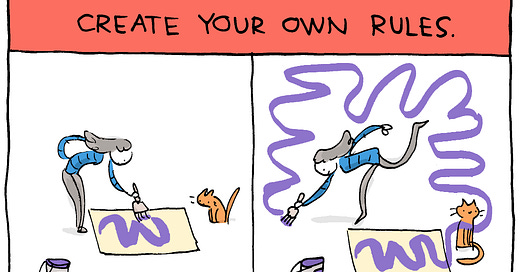


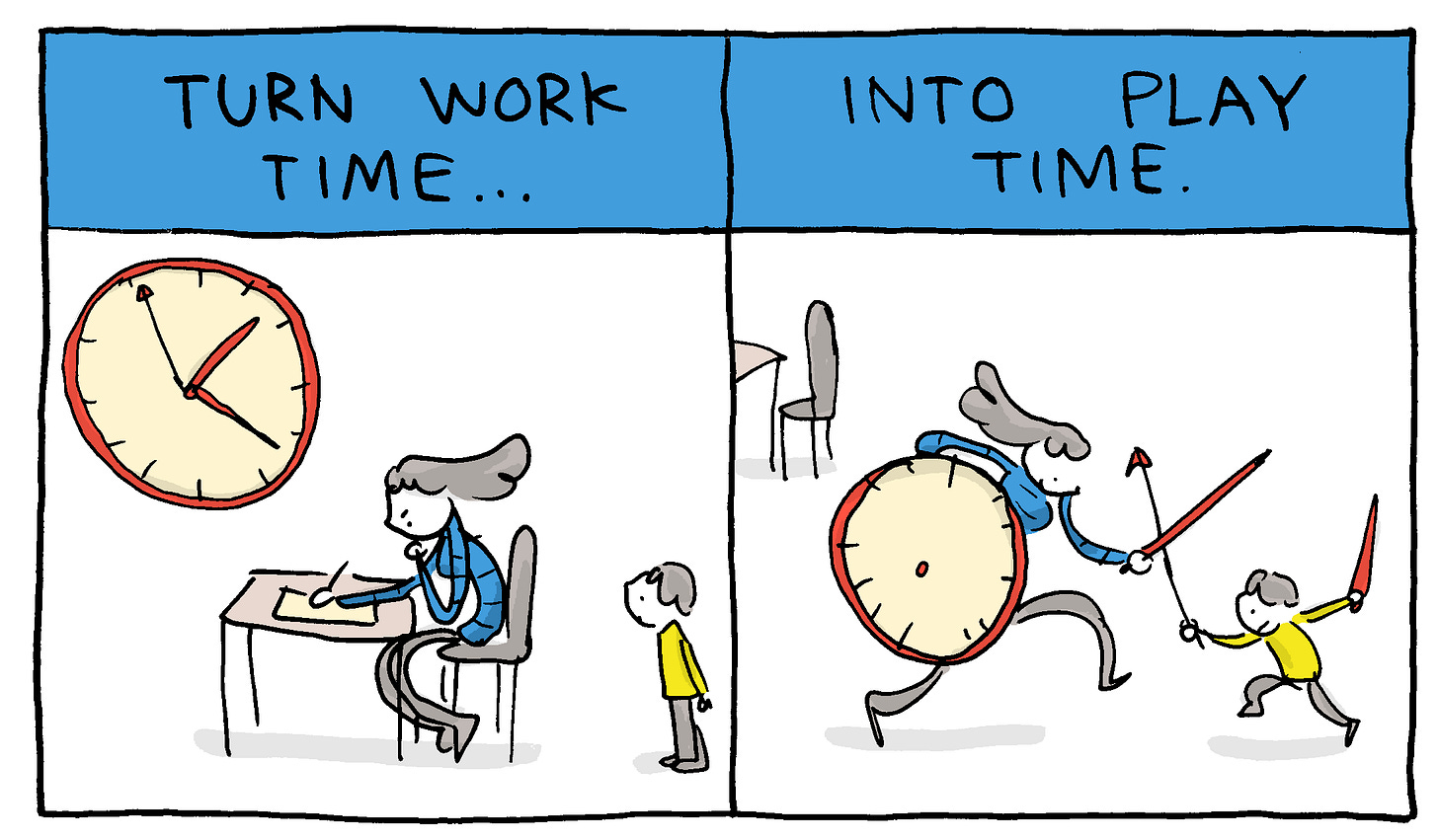
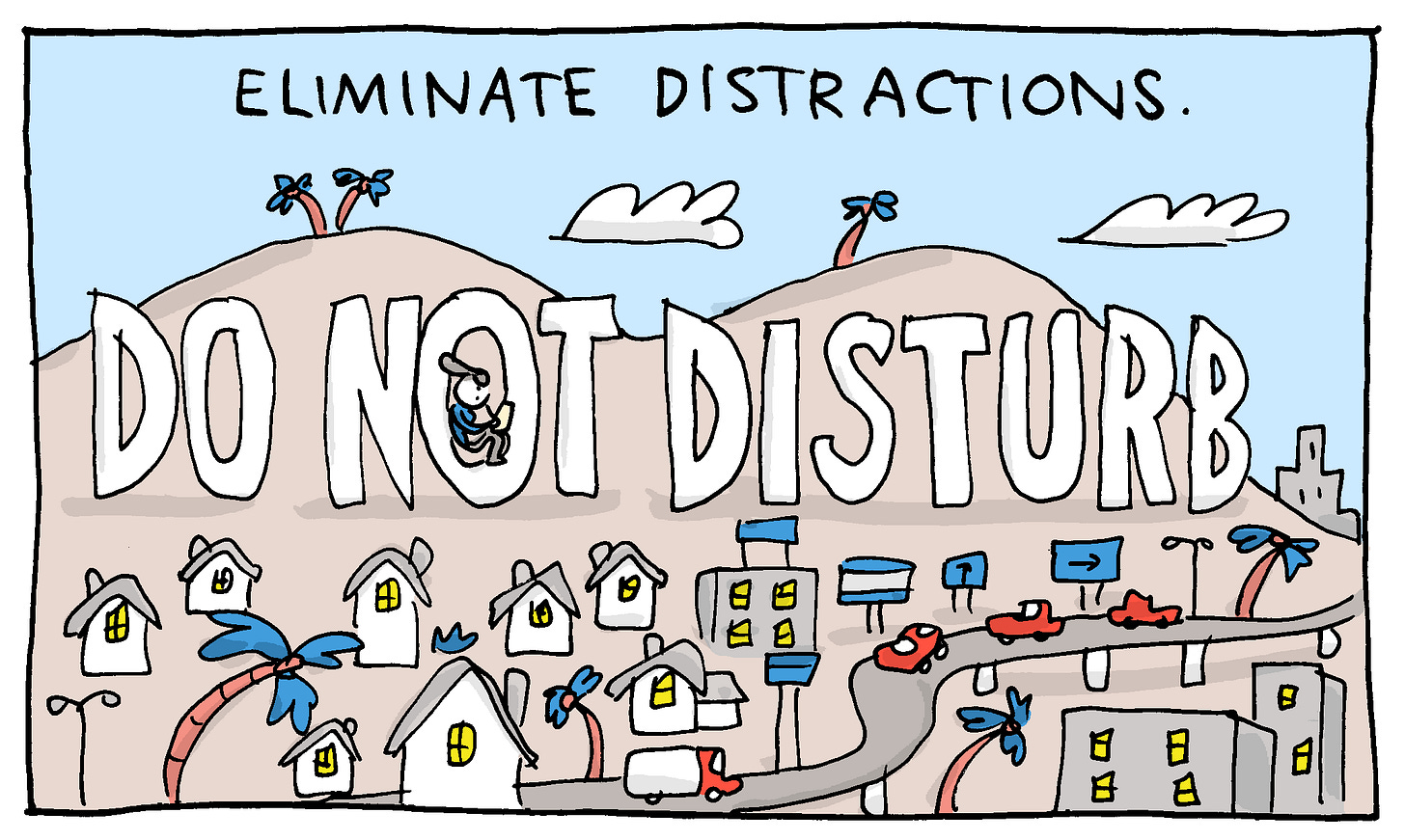



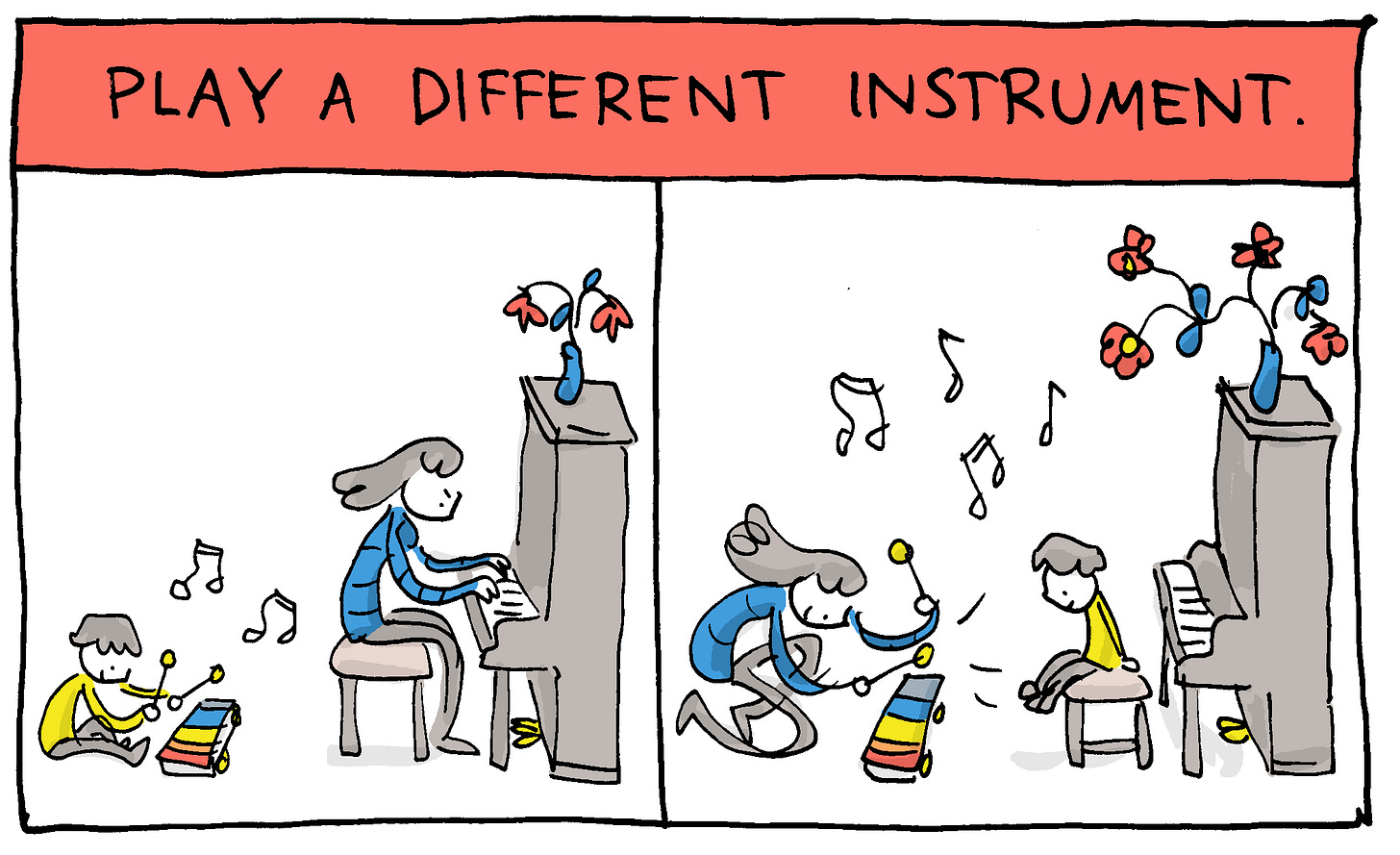






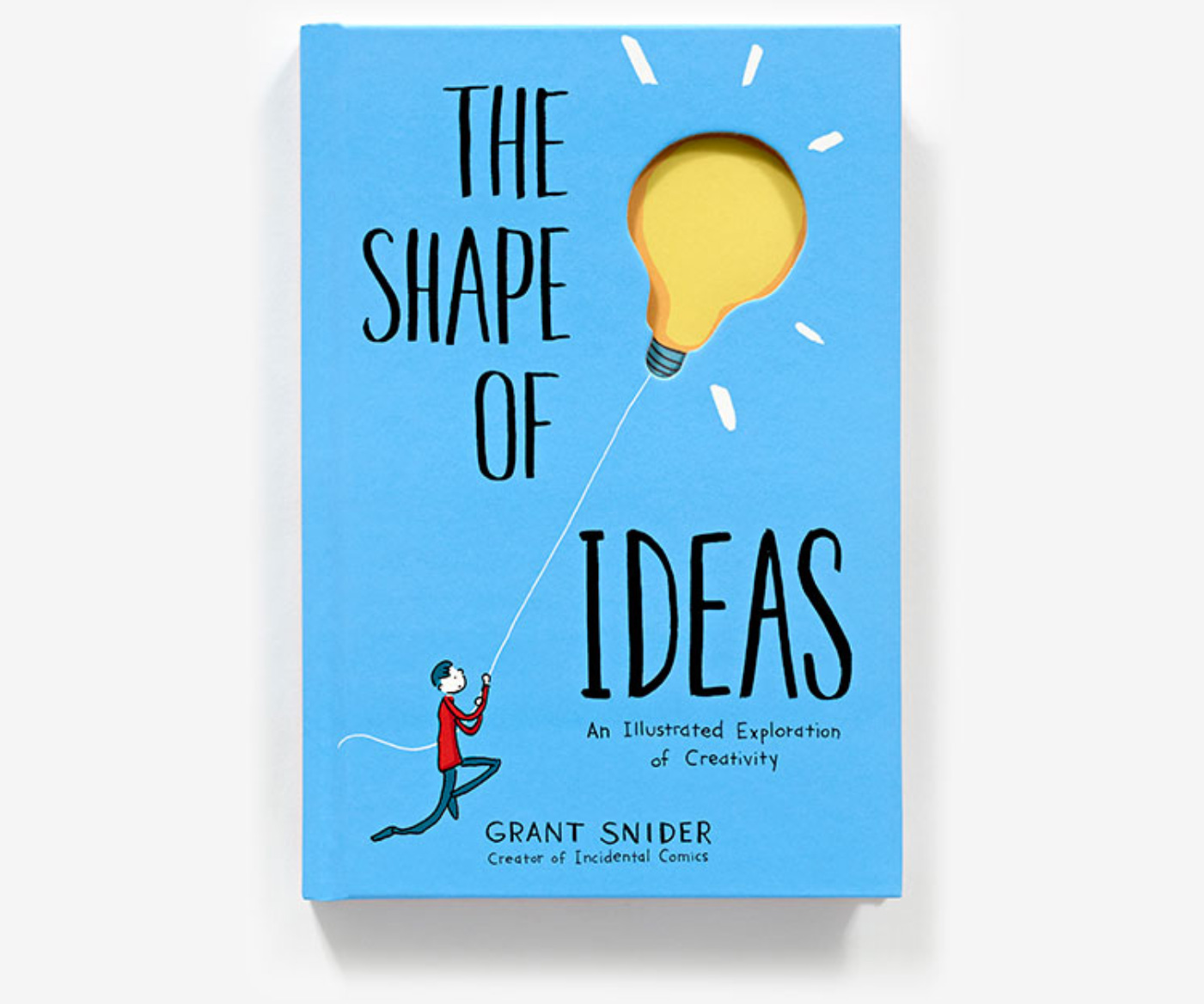
All good advice. I am definitely in the "tidy desk, creative mind" camp. Clutter or messiness drives me crazy. Organizing brings me joy. But I seem to be in the minority amongst the writers I know. 🤣
As a musican, I like how we call making music "playing" music. It is fun. It is play most of the time. I think more writers could benefit from this mindset. Make writing "play."
Hie this was a delightful read and a cute ass reminder to exist with a full range of possibilities while creating